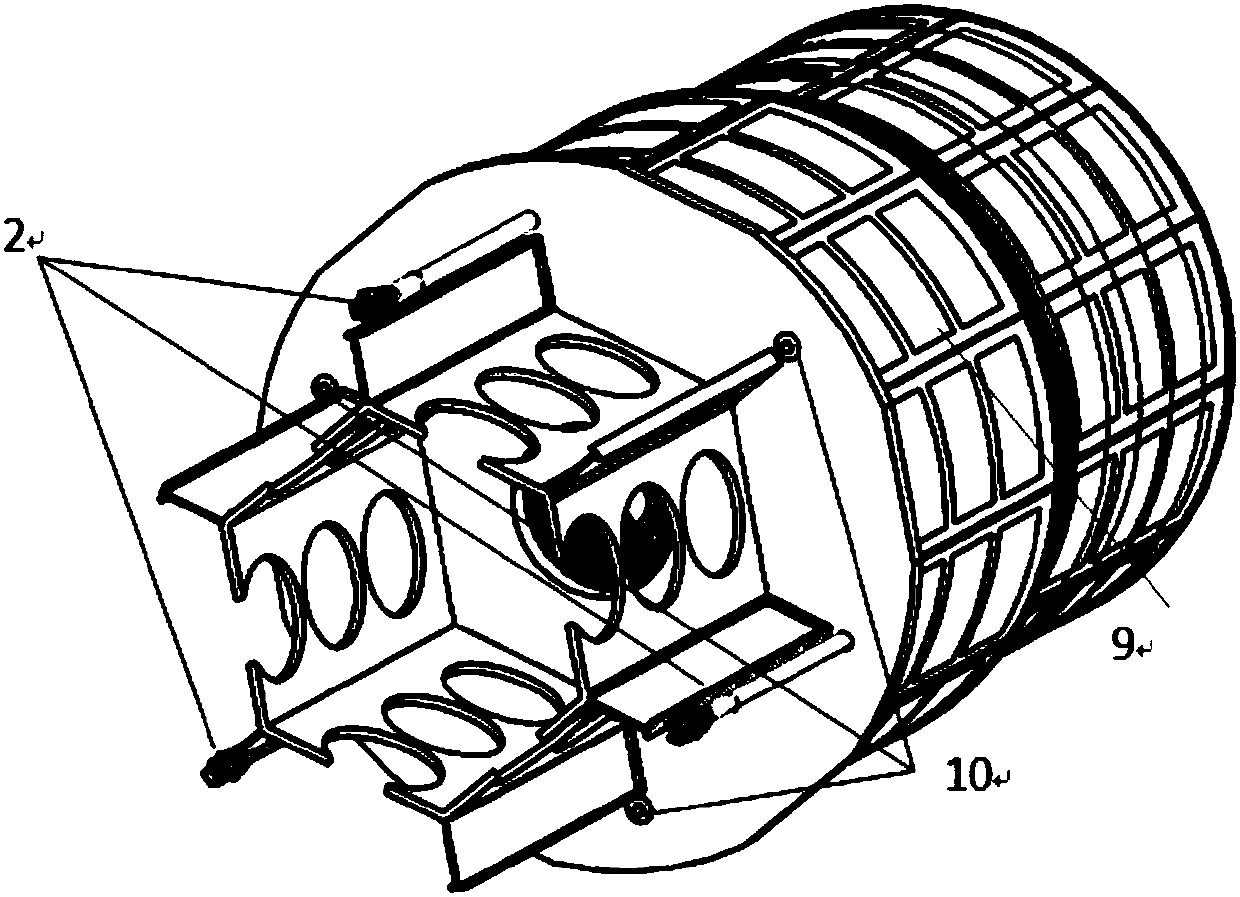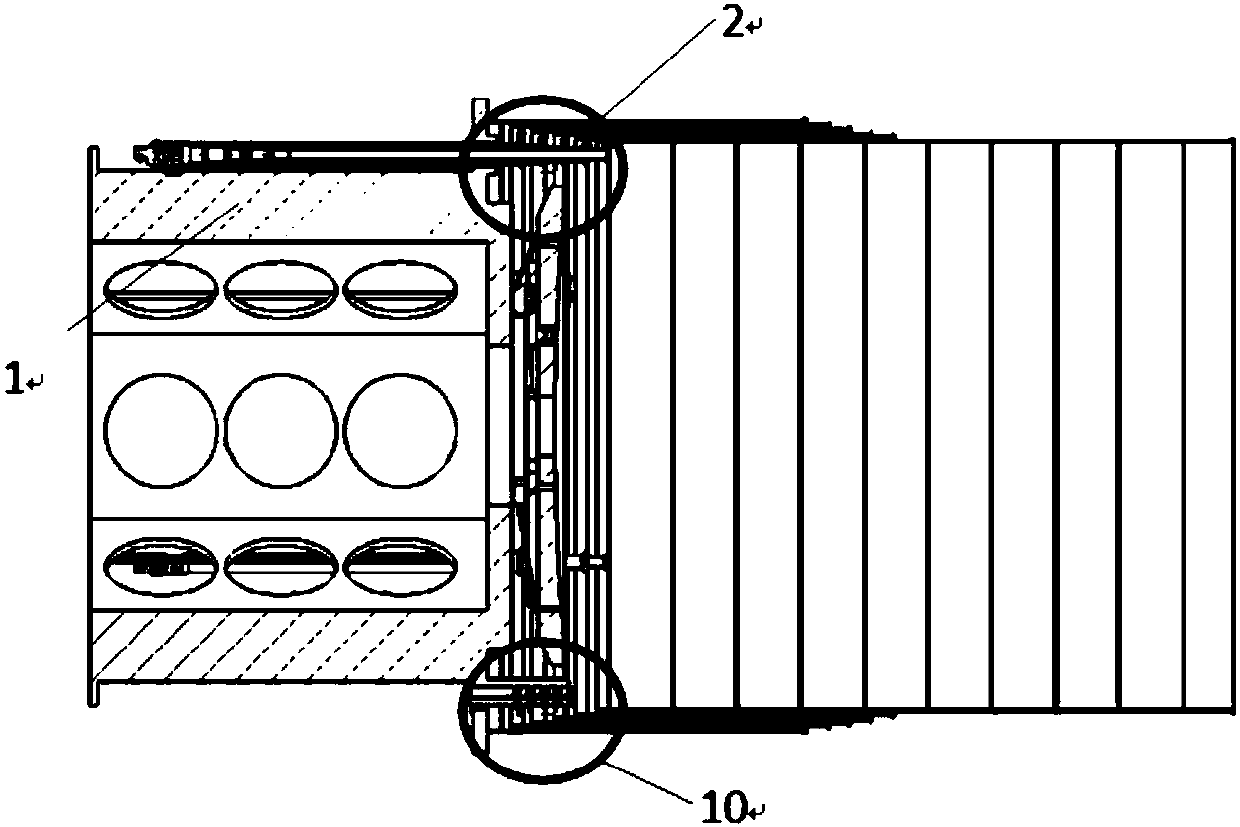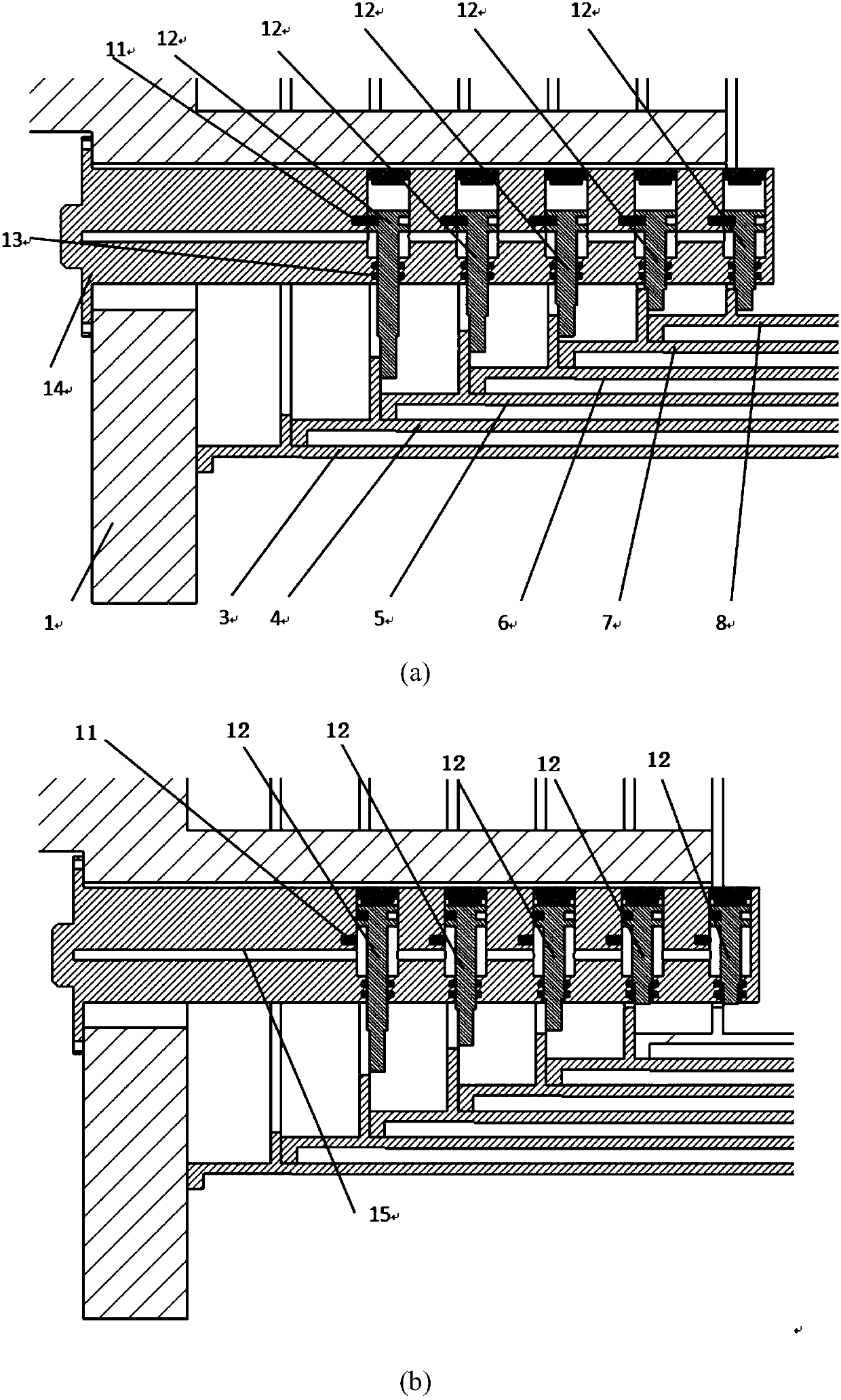Deployable hood device for stationary orbit remote sensing camera
A remote sensing camera and geostationary orbit technology, applied in the aerospace field, can solve problems such as the inability to place a fixed hood, the reduction of the signal-to-noise ratio of the optical system, and the reduction of camera imaging quality, and achieve high reliability, large driving force, and locking force big effect
- Summary
- Abstract
- Description
- Claims
- Application Information
AI Technical Summary
Problems solved by technology
Method used
Image
Examples
Embodiment Construction
[0013] The present invention will be described in further detail below in conjunction with the accompanying drawings and embodiments.
[0014] An expandable hood device for a remote sensing camera with a diameter of 3 meters in geostationary orbit includes:
[0015] Optomechanical structure body 1, pull cord sleeve driving mechanism 2, multi-stage shading cylinder, shading cylinder heating plate 9 and locking mechanism 10. Such as figure 1 and figure 2 As shown, in this embodiment, the number of multi-stages is six.
[0016] The light-mechanical structure body 1 is fixed to the first-stage shading cylinder 3 in the multi-stage shading cylinder, and the multi-stage shading cylinder realizes the compressed state through the locking mechanism 10; Similarly, each level of sleeve is rigidly connected to the corresponding level of shading tube. When unlocking, the locking mechanism 10 is activated, and the multi-level shading tube is in a released state, and the multi-level slee...
PUM
 Login to View More
Login to View More Abstract
Description
Claims
Application Information
 Login to View More
Login to View More - R&D
- Intellectual Property
- Life Sciences
- Materials
- Tech Scout
- Unparalleled Data Quality
- Higher Quality Content
- 60% Fewer Hallucinations
Browse by: Latest US Patents, China's latest patents, Technical Efficacy Thesaurus, Application Domain, Technology Topic, Popular Technical Reports.
© 2025 PatSnap. All rights reserved.Legal|Privacy policy|Modern Slavery Act Transparency Statement|Sitemap|About US| Contact US: help@patsnap.com



